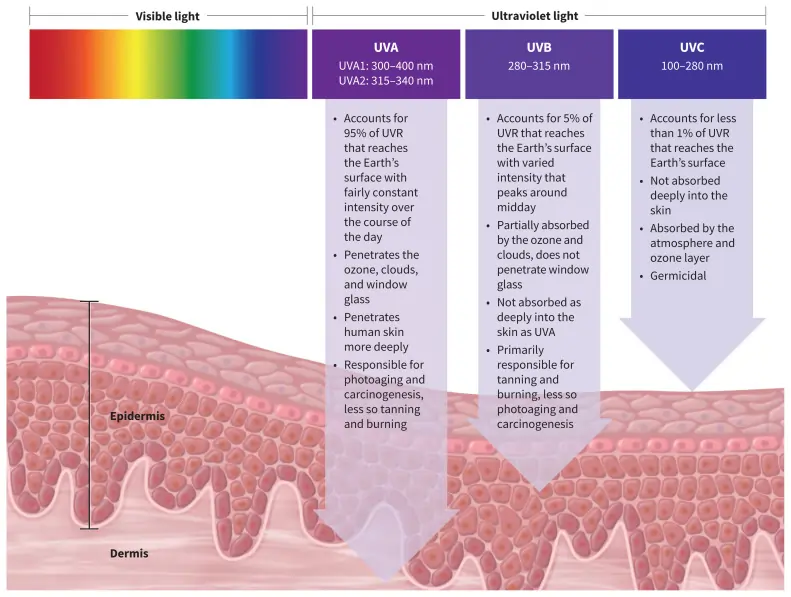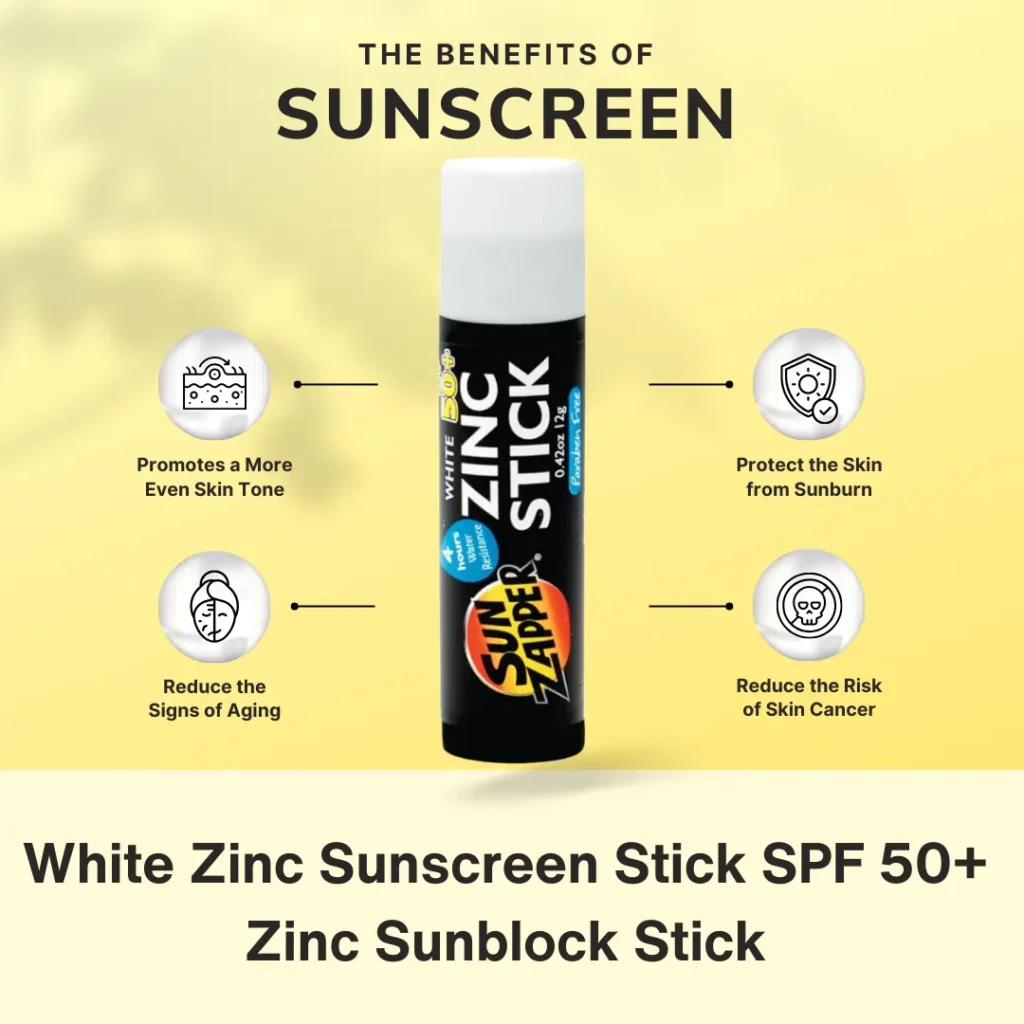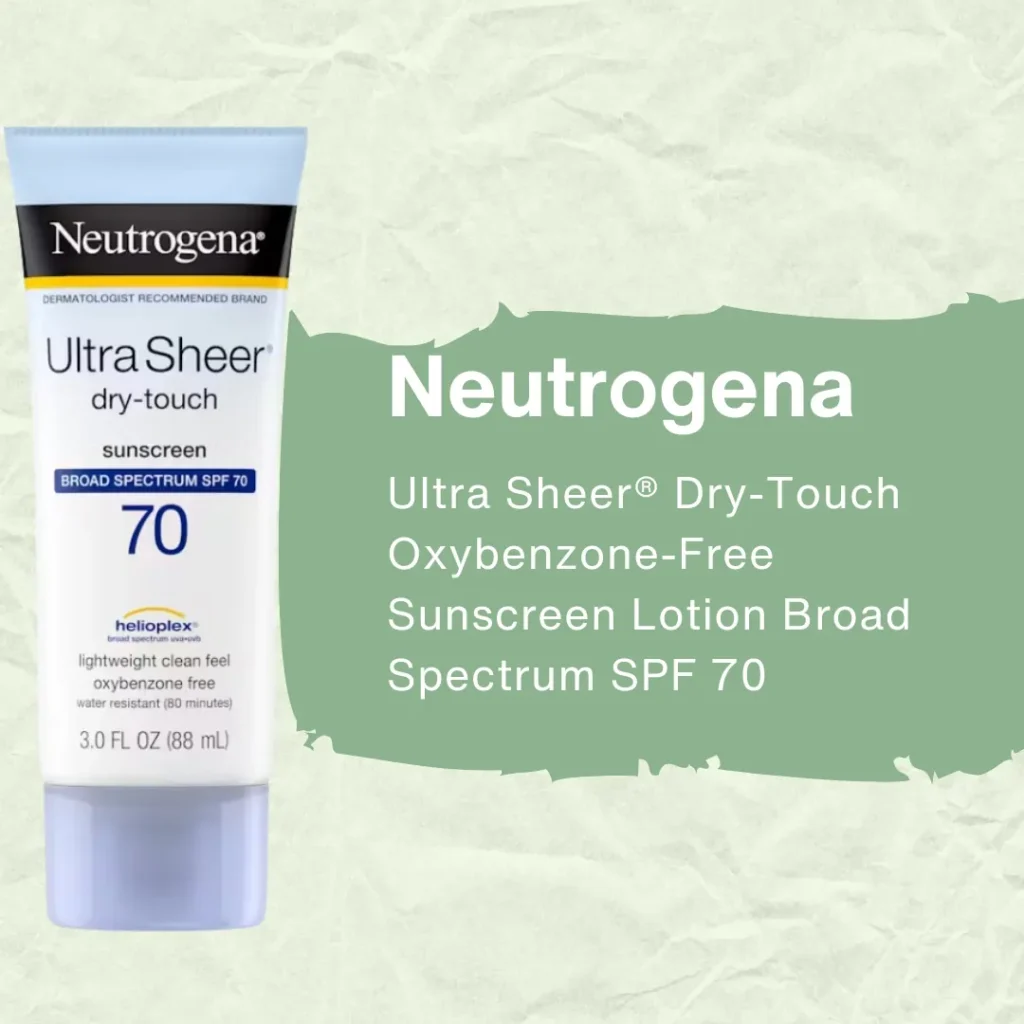
These are various brands of sunscreen that cricketers use, but the main thing to notice is what is common in those creams. This includes the sun protection factor known as SPF and the content of zinc oxide within the cream.
Cricketers mainly use Zinc Oxide Sunscreen which provides at least SPF 50+ sun protection and ideally contains zinc oxide. This is because zinc acts as a natural sun blocker, and offers up to 3 Hours of Water & Sweat Resistance helping them avoid sunburn and decrease the risk of skin cancer from the harmful effects of the sun’s UV rays.
Why do cricketers apply sunscreen
Cricketers apply sunscreen because they spend long hours on the field, whether playing matches or participating in practice sessions, often in direct sunlight, which can cause sunburn and increase the risk of skin cancer. Sunscreen helps protect the skin from the harmful effects of the sun’s UV rays.
In addition to sunscreen, cricketers also use white sunscreen sticks, providing even more protection by reflecting the sun’s rays away from the skin.
These products are often applied to the nose, cheeks, forehead, and other areas of the face that are most exposed to the sun.
when does cricketers apply sunscreen
Cricketers apply sunscreen during matches and practice sessions in the daytime. During fielding, it is important to apply sunscreen because they are directly exposed to the sun for a long time.
types of sunscreen that cricketers use
Cricketers primarily use three types of sunscreen Chemical Sunscreens which absorb UV rays, Mineral Sunscreens which reflect UV rays, and Hybrid Sunscreens, which have combined features of both Chemical and Mineral sunscreens. Regardless of the type chosen, the essential aspect of selecting sunscreen for cricketers is that it has to be water/sweat-resistant and contain Zinc Oxide.
Water/Sweat-resistant sunscreens maintain their effectiveness even after water, sweat, or humidity exposure, which is the main criterion for choosing sunscreen.

And Zinc Oxide provides broad spectrum ( UAV/UAB) coverage, blocking 97%of the sun’s harmful rays. This is important because UAV rays can prematurely age your skin, where as UAB rays can burn your skin.
Which SPF sunscreen is best for cricketers?
The choice of SPF (Sun Protection Factor) in sunscreen for cricketers generally depends on various factors, including skin type, intensity of sun exposure, and personal preferences.
However, considering the extended duration of time spent on the field during cricket matches and practices, cricketers often opt for a minimum of SPF 50+ sunscreen.
Do You Need To Apply Sunscreen
Yes, you should definitely apply sunscreen before going out to play. Cricket matches often last for several hours, exposing players to prolonged sun exposure. Without protection, players are at risk of sunburn, premature aging, and an increased risk of skin cancer.
Why Applying Sunscreen Is Crucial For A Cricketer
Here’s why applying sunscreen is crucial for the cricketer:
- Prolonged exposure: Cricket matches can last several hours, especially in formats like Test cricket. Players are continuously exposed to the sun’s harmful UV rays during this time.
- Fielding positions: Fielders, in particular, spend long periods standing in the sun, increasing their exposure to UV radiation. Bowlers and batsmen are also susceptible when they are out on the field.
- Reflective surfaces: Cricket fields often have grassy surfaces, which can reflect UV radiation, further increasing exposure for players.
- Day-night matches: In day-night matches or when playing during late afternoon hours, the angle of the sun may still pose a risk of sunburn and skin damage.
- Skin cancer risk: Prolonged sun exposure without protection increases the risk of skin cancer, including melanoma, especially for individuals with fair skin.
Is It Safe
Yes, it is 100% safe to use sunscreen. Sunscreen helps protect the skin from the sun’s harmful ultraviolet (UV) rays, which can cause sunburn, premature ageing, and an increased risk of skin cancer.
When choosing a sunscreen, always go for SPF of 50 or higher, and follow the instructions for application. It’s important to reapply sunscreen every two hours, or more frequently if swimming or sweating.
While some individuals may have sensitivities to certain sunscreen ingredients, the benefits of using sunscreen typically outweigh the risks, especially when considering the long-term health of your skin.
How To Apply Sunscreen
Here’s a step-by-step guide on how to apply sunscreen on your skin-
Preparation: Begin with clean, dry skin. If you’re using other skincare products, apply them before sunscreen.
Amount: Take a sufficient amount of sunscreen. The general guideline is about a shot glass (approximately 1 ounce) to cover your entire body adequately.
Dispensing: Squeeze the sunscreen onto your fingertips or the palm of your hand. Hold the container close to your skin for sprays to make sure it’s even coverage.
Application:
- Apply sunscreen to your face, including your forehead, cheeks, nose, and chin. Be gentle around the delicate eye area, and consider using a sunscreen specifically formulated for the face.
- Apply sunscreen to all exposed areas, such as your arms, legs, chest, and back. Don’t forget areas like your ears, neck, hands, and feet.
- Rubbing: Gently rub the sunscreen into your skin using circular motions. Ensure even coverage and pay extra attention to areas that tend to get more sun exposure.
- Reapplication: Apply sunscreen at least 15 minutes before going outdoors. Reapply sunscreen every two hours, or more frequently if you’re sweating heavily.
- Lips: Use a lip balm or lipstick with SPF to protect your lips from sunburn. Apply generously and reapply as needed throughout the day.
- Extra protection: Consider wearing protective clothing, such as wide-brimmed hats, sunglasses, and lightweight, long-sleeved shirts, especially during peak sun hours.
- Check coverage: After applying sunscreen, check for any missed spots or areas that need additional protection. Touch up as needed to ensure full coverage.
By following these step-by-step instructions, you can effectively apply sunscreen to protect your skin from the sun’s harmful UV rays.
Normal sunscreen vs. zinc sunscreen
Let’s compare normal sunscreen with zinc sunscreen:
| Aspect | Normal Sunscreen | Zinc Sunscreen |
|---|---|---|
| Active Ingredient(s) | Chemical UV filters (e.g., avobenzone, octinoxate) | Zinc oxide (physical/mineral UV filter) |
| UV Protection | Protects against UVA and UVB rays | Protects against UVA and UVB rays |
| Application | Absorbs into the skin | Sits on the skin surface, forms a physical barrier |
| White Cast | May cause minimal to no white cast, depending on formulation | Often leaves a white cast due to zinc oxide |
| Suitability for Sensitive Skin | May irritate sensitive skin, depending on individual reactions | Generally suitable for sensitive skin, less likely to cause irritation |
| Water Resistance | May vary depending on formulation | Often provides better water resistance |
| Reapplication | Typically needs to be reapplied every 2 hours | May require less frequent reapplication |
| Photostability | May degrade with sun exposure | Generally more photostable |
| Environmental Impact | Some chemical filters may pose environmental concerns | Zinc oxide is considered environmentally friendly |
| Cosmetic Compatibility | May be suitable for all skin types depending on formulation | May feel thicker and may not blend as easily |
| Availability | Widely available in various formulations (e.g., lotions, sprays, gels) | Available in various formulations but less common |
This comparison outlines the key differences between normal sunscreen (typically containing chemical UV filters) and zinc sunscreen (containing zinc oxide as the primary active ingredient). Factors such as UV protection, application, white cast, suitability for sensitive skin, water resistance, and environmental impact differ between the two types. It’s important to choose a sunscreen that meets your individual needs and preferences.
Some of the best sunscreens that cricketers use
Well, there are so many brands out there in the market. Among all of them, I’ve shortlisted the best three sunscreens for you. You can choose any of them according to your liking and preference.
While selecting the best three sunscreens, our main criteria are more than 50 SPF protection, water or sweat resistance, and containing zinc oxide.
So here we go :-
1. White Zinc Sunscreen Stick SPF 50+
You may see a cricketer with a white strip on her face around the nose even a specific part of the face, and even on the lips. This type of sunscreen often comes in a stick form.

If you want this type of sunscreen, go for the Zinc Stick by Sun Zapper :-

2. Neutrogena Ultra Sheer dry touch SPF 70
If you want to go for more SPF protection and evenly spread it all over the face, you should consider this sunscreen. It is also one of the most commonly used sunscreen brands out there.

If you want this type of sunscreen, go for Ultra Sheer Dry Touch Sunscreen by Neutrogena :-

3. Blue Lizard Sensitive Mineral Sunscreen SPF 50+
If your skin is sensitive, go for the Blue Lizard Sensitive Mineral Sunscreen SPF 50+. It is equally as good as our previous two options, but additionally, it is best for sensitive skin players.

conclusion
As a cricketer myself, I try to provide best informetion regards sunscreen. I have tried to address all the related queries regarding the topic ‘What sunscreen do cricketers use?’ and provide guidance on choosing the right sunscreen for you. Lastly, I will share with you the top sunscreen that I personally use and that is commonly used by most cricketers.”
I hope that artical helped you to find the best sunscreen that cricketer use. If you still have some queries left in your mind, please leave a message in the comments below.
